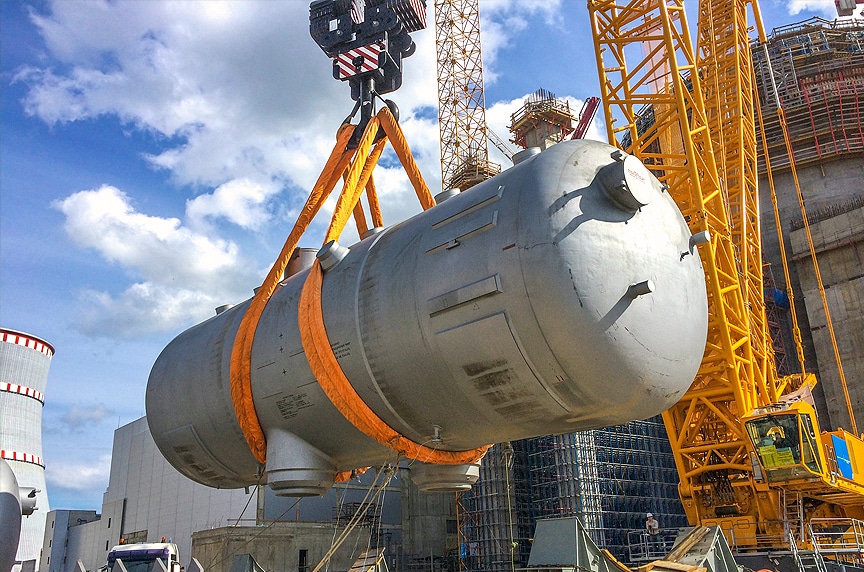
What are synthetic slings?
Synthetic slings or Webbing slings are made using polyester, nylon or other high performance webbing material. They offer a range of advantages for lifting, load restraint, hoisting and general rigging.
Most popular synthetic slings
- Flat Web Slings – Made from high performance polyester webbing, flat web slings are an essential high-performance, low-cost lifting accessory. They offer a much lighter alternative to chain slings and wire rope slings, they are easy to handle and have an excellent grip level on the load.
- Endless Round Slings – Offering many of the benefits of web slings, round slings offer huge flexibility and capacity at an economical cost.
- Ratchet Straps – Similar in design to web slings, ratchets are used to secure loads usually for transport. Using flat webbing and metal hardware, ratchet straps can be used to tie down most loads securely.
Advantages of synthetic slings
- Lightweight – Being extremely lightweight for their capacity makes them great for use of use, manual handling and rigging, allowing the total load to be kept to a minimum.
- Flexibility – Made from flexible synthetic fibres means they are great at conforming to unusual loads and allows them to grip the surface of the load without point loading.
- Strength – Protier offer synthetic slings with a capacity of over 100 ton, all with a safety factor of 7:1.
- Cost – Synthetic slings are relatively inexpensive in comparison to their alternatives such as wire rope slings & chain slings.
- Low Maintenance – Synthetic slings offer great performance and only require routine thorough examination, with no moving parts, they don’t rust and have great wear resistance when used correctly.
Synthetic Slings Usage Tips
- Check the Working Load Limits (WLL) – Each sling comes with a label identifying its working load or rated capacity, in different configurations. You should never exceed its WLL.
- Use the Correct Sling – There are many different types of slings on the market, ensure you use one suitable for your application.
- Inspect before Use – Always carry out a thorough check of each sling before use, looking for damage such as cuts, heat damage and abrasions.
- Use Edge Protection – Although synthetic slings have great abrasion and cut resistance, most synthetic sling failures are caused by sharp edge damage. Use edge protection and corner protectors wherever required.
- Inspection Plan – Ensure you comply with LOLER and other rlevant regulations by ensuring you have your slings inspected and a thorough examination is carried out by a competent person, a colour tagging system is a popular way of keeping track of inspected equipment.
If you require any further information on the use and supply of synthetic slings, give out team at Protier Lifting Services a call on 0113 2361811 or email us at sales@protier.co.uk.




